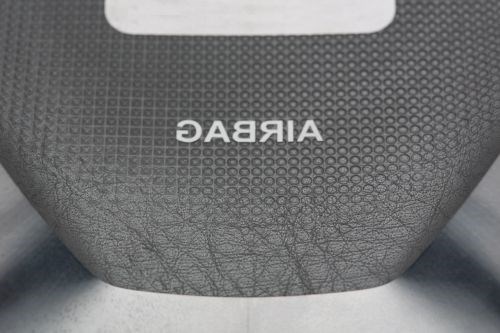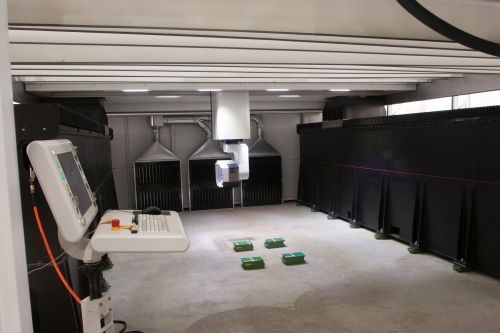Better Machines for a Better Process
We recently reported on the potential of laser texturing for automotive interior tooling applications. What we didn’t mention is that the machines performing this process have improved markedly in recent years.
Share
Read Next

In an example of the possibilities unlocked by laser texturing, a close look at this airbag cover mold reveals three different grains that morph together seamlessly. The tool was textured in Europe on lasers from GF Machining Solutions, which supplied this image.
This March-issue feature article details an application that, as far as I (or my sources) can tell, is the first instance of a major automotive OEM specifying laser texturing for cosmetic interior tooling in North America. Having already caught on for such work on Europe, the technology offers a number of advantages over the traditional chemical etching processes—advantages that could provide time and cost savings for everyone in the supply chain, including toolmakers. Read the article to learn more.
Given the article’s focus on the process, it didn’t touch much on the machinery itself. That technology is worth a look, given how far it’s come since Custom Etch, the texture house detailed in the article, purchased its first laser from GF Machining Solutions in 2011. “Four years ago, the biggest hurdle by far was speed, but they’ve come a long way in addressing that,” says Don Melonio, vice president of Custom Etch.
Curious to learn more, I made sure to relay that statement to Gisbert Ledvon, head of business development at GF Machining Solutions, when I called as part of my research for the story. It turns out that recent years have seen the company introduce newer, more powerful laser sources that enable removing more material in a shorter amount of time. Today, machines are available with lasers ranging to 100 W, versus a maximum of only 50 before. More powerful lasers have also led the manufacturer to refine designs for cooling systems and dust evacuation systems, particularly for the Laser 4000, it’s largest model and Custom Etch’s most recent laser purchase.

The workzone of Custom Etch's Laser 4000 is large enough to handle even the largest molds without disassembly.
Yet, Melonio’s comments on speed likely referred to more than just the rate of material removal. Getting a job ready to run is faster now, too. In the past, applying a grain pattern to a 3D model—a process that involves a great amount of data—might have taken 20 to 30 hours of postprocessing time, Ledvon says. Thanks to a new algorithm, postprocessing is now about 60 times faster.
Gains don’t stop there. Ledvon adds that the company’s latest laser machines can also be calibrated more quickly after a lens change compared to previous versions. That’s thanks largely to new calibration software and camera, which, together, eliminate the need to manually calibrate the machine for the correct focal point.
Finally, Ledvon points out that not all recent developments relate to speed. The company also has a new patent for how patterns are applied to the 3D surface. For a large surface, such as a dashboard tool, the texture pattern must be divided into sections—so, the laser machines the pattern in one location, then moves over and duplicates it in an adjacent area of the surface. GF Machining’s software overlays these “patches” in a way that eliminates visible seam lines when processed by the laser, Ledvon says.
This latter capability struck me as particularly important critical, given that a primary advantage of the process for automotive molds is its ability to blend patterns seamlessly across any geometry and multiple parts. Read the article to learn more about the potential of laser texturing for this sort of work.

This part, a cover for a component used to attach the passenger-side seat to the vehicle’s body, was one of three automotive interior tools chosen for laser texturing as part of a minor redesign of a luxury crossover SUV.
Read Next
How to Use Continuing Education to Remain Competitive in Moldmaking
Continued training helps moldmakers make tooling decisions and properly use the latest cutting tool to efficiently machine high-quality molds.
Read MoreHow to Use Strategic Planning Tools, Data to Manage the Human Side of Business
Q&A with Marion Wells, MMT EAB member and founder of Human Asset Management.
Read MoreAre You a Moldmaker Considering 3D Printing? Consider the 3D Printing Workshop at NPE2024
Presentations will cover 3D printing for mold tooling, material innovation, product development, bridge production and full-scale, high-volume additive manufacturing.
Read More















.jpg;maxWidth=300;quality=90)



